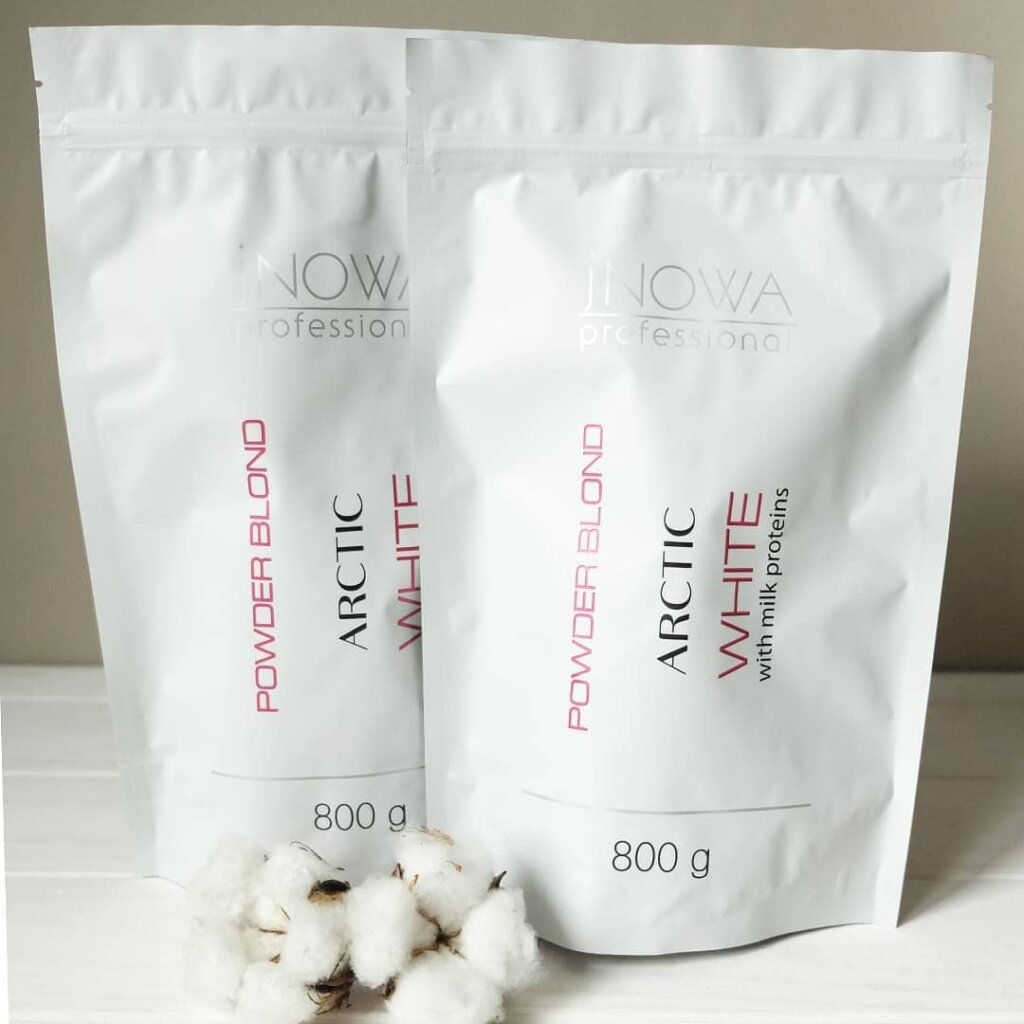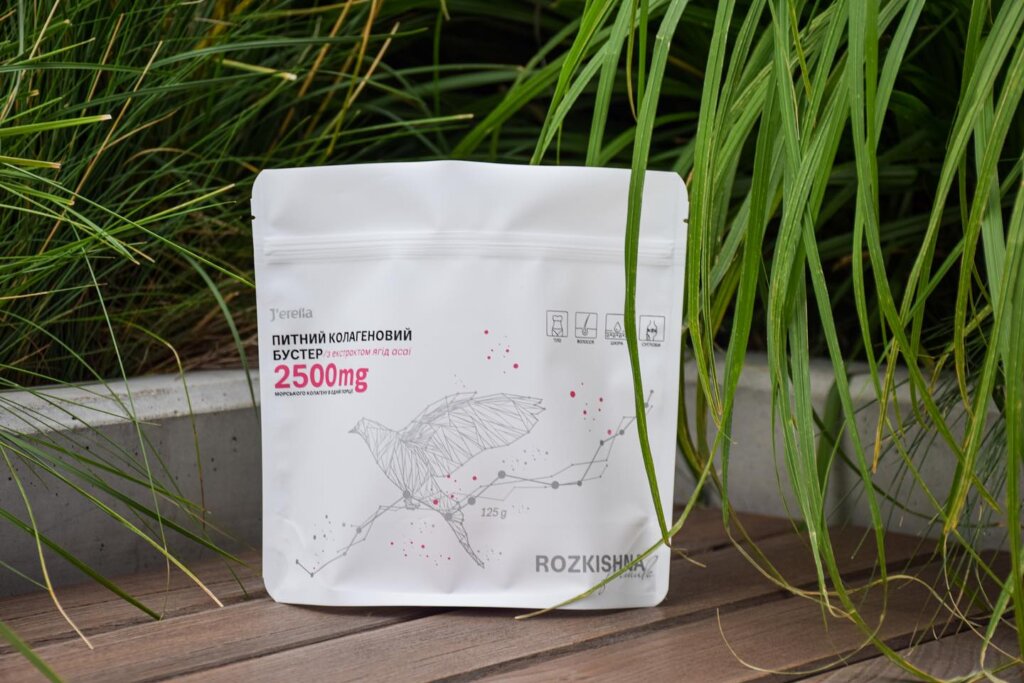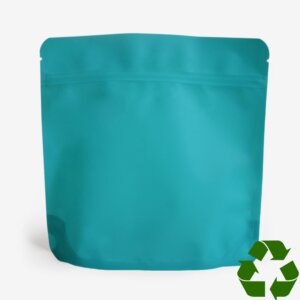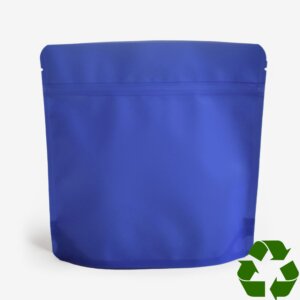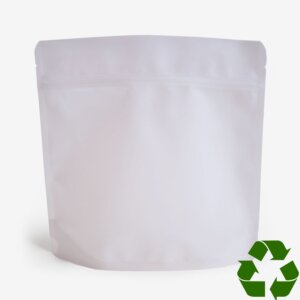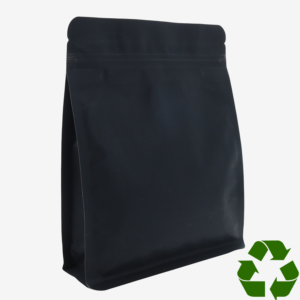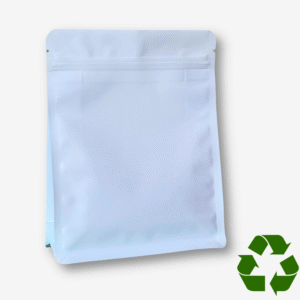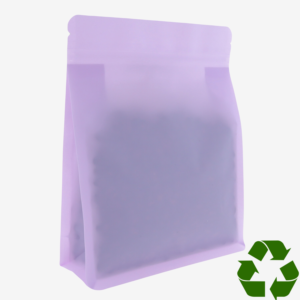Packaging for Cleaning Products: Trends and Innovations in 2025
The cleaning products industry is experiencing a transformative shift in 2025, with packaging playing a pivotal role in brand differentiation, consumer satisfaction, and environmental responsibility. As manufacturers navigate evolving consumer preferences and stringent sustainability regulations, innovative cleaning product packaging solutions are reshaping how household chemicals reach consumers. This comprehensive guide explores the latest cleaning product packaging trends and provides actionable insights for brands looking to stay ahead in this competitive market.
-
Doy Pack Recyclable Emerald€0.319 This product has multiple variants. The options may be chosen on the product page
-
Doy Pack Recyclable Very Peri€0.319 This product has multiple variants. The options may be chosen on the product page
-
Doy Pack Recyclable Viva Magenta€0.319 This product has multiple variants. The options may be chosen on the product page
-
Doy Pack Recyclable White€0.319 This product has multiple variants. The options may be chosen on the product page
-
Flat Bottom Recyclable Black€0.275 – €0.443 This product has multiple variants. The options may be chosen on the product page
-
Flat Bottom Recyclable Blue€0.275 This product has multiple variants. The options may be chosen on the product page
-
Flat Bottom Recyclable Latte€0.275 – €0.443 This product has multiple variants. The options may be chosen on the product page
-
Flat Bottom Recyclable Lavender€0.275 – €0.443 This product has multiple variants. The options may be chosen on the product page
Why Packaging Matters for Cleaning Products
Packaging for cleaning products serves far beyond simple containment. It’s a critical touchpoint that influences purchasing decisions, ensures product integrity, and communicates brand values. In 2025, consumers are increasingly sophisticated, evaluating products based on functionality, safety features, and environmental impact before making their choice.
Effective liquid cleaning product packaging must address multiple challenges simultaneously. It needs to withstand aggressive chemical formulations, prevent leakage during transportation and storage, provide clear usage instructions, and comply with safety regulations. Moreover, with e-commerce accounting for a growing share of household product sales, packaging must be robust enough to survive shipping while minimizing material waste.
The right packaging solution can significantly reduce production costs, extend shelf life, and enhance the overall user experience. Brands that invest in thoughtful packaging design often see improved customer loyalty and reduced product returns, making it a strategic business decision rather than merely a functional necessity.
Different Types of Packaging for Cleaning Products: Which Solutions Work Best?
The diversity of cleaning products demands equally varied packaging approaches. Understanding the strengths and limitations of each option helps manufacturers select the most appropriate solution for their specific formulations.
Rigid plastic bottles remain the traditional choice for liquid cleaning product packaging, offering excellent chemical resistance and familiar ergonomics. High-density polyethylene (HDPE) bottles are particularly popular for concentrated detergents and multi-purpose cleaners due to their durability and compatibility with trigger sprayers. However, their environmental footprint and transportation weight are driving innovation toward lighter alternatives.
Doypack packaging has emerged as a game-changing solution for cleaning product packaging solutions in 2025. These flexible pouches significantly reduce material usage compared to rigid containers while maintaining excellent barrier properties. Doypacks for liquid detergents offer superior space efficiency during shipping and storage, translating to lower carbon emissions across the supply chain. Their resealable features and easy-pour spouts make them particularly appealing for concentrated formulas and refill products.
Bag-in-box systems are gaining traction for commercial and bulk household applications. This format combines a flexible inner bag with a protective outer carton, enabling controlled dispensing while minimizing oxidation and contamination. It’s especially suitable for larger volume products where sustainability and cost-effectiveness are priorities.
Aluminum and steel containers serve specialized niches, particularly for premium cleaning products or formulations requiring absolute oxygen barriers. While heavier and more expensive, their infinite recyclability appeals to environmentally conscious consumers.
The best packaging choice depends on product viscosity, chemical compatibility, target market preferences, and distribution channels. Forward-thinking manufacturers are increasingly adopting portfolio approaches, offering multiple formats to serve different consumer segments and usage occasions.
Eco-Friendly Packaging for Cleaning Products: Why It Matters
Sustainability has transitioned from marketing buzzword to business imperative in the cleaning products sector. Consumer research consistently shows that environmental considerations directly influence purchasing decisions, with over 70% of shoppers willing to pay premium prices for products in sustainable packaging.
Household chemicals packaging faces unique environmental challenges. Many traditional materials are difficult to recycle due to chemical residues or multi-layer constructions that combine incompatible materials. This has resulted in millions of tons of packaging waste ending up in landfills annually, creating both environmental and reputational risks for brands.
In response, the industry is embracing recyclable packaging innovations at an unprecedented pace. Mono-material structures that can be easily processed in existing recycling infrastructure are becoming standard. Post-consumer recycled (PCR) content integration is expanding, with leading brands now incorporating 50-100% recycled materials in their containers without compromising performance.
Biodegradable and compostable options are emerging for specific applications, though they must be carefully evaluated to ensure they don’t compromise product safety or shelf life. Water-soluble pods and concentrated refill systems are reducing packaging volume dramatically, addressing waste concerns while offering convenience benefits.
The circular economy model is reshaping packaging strategies entirely. Refill stations in retail environments, subscription-based refill programs, and incentivized container return schemes are gaining momentum. These approaches transform packaging from single-use waste into valuable assets that circulate within closed-loop systems.
Regulatory pressures are accelerating this transition. Extended Producer Responsibility (EPR) legislation in multiple markets now requires manufacturers to finance the collection and recycling of their packaging, creating direct financial incentives for sustainable design. Brands that proactively adopt eco-friendly packaging gain competitive advantages while future-proofing against increasingly stringent regulations.
How Packaging Affects Safety and Convenience in Cleaning Products
Safety features integrated into cleaning product packaging have evolved significantly, reflecting heightened awareness of household chemical hazards and regulatory requirements. Child-resistant closures are now mandatory for many formulations, employing sophisticated mechanisms that prevent accidental access while remaining accessible for adults, including those with limited dexterity.
Tamper-evident seals provide crucial assurance of product integrity, protecting consumers from contamination and giving brands legal protection against liability claims. These features are particularly important for e-commerce channels where products pass through multiple handling stages before reaching end users.
Sustainable packaging innovations are enhancing safety beyond traditional measures. Lighter-weight containers reduce strain injuries for users and warehouse workers. Transparent or translucent materials allow visual product inspection, while clear labeling areas ensure hazard warnings and usage instructions remain legible throughout the product lifecycle.
Convenience features are equally important for consumer satisfaction. Ergonomic handles, controlled dispensing mechanisms, and one-handed operation capabilities address real-world usage scenarios. Packaging for liquid detergents increasingly incorporates measuring systems that promote proper dosing, reducing waste and improving cleaning efficacy.
Smart packaging technologies are entering the mainstream, with QR codes and NFC chips providing instant access to detailed product information, safety data sheets, and recycling instructions. Some advanced systems even track usage patterns and send refill reminders, creating seamless replenishment experiences.
The convergence of safety and convenience is particularly evident in portion-controlled formats like soluble pods and single-dose capsules. While requiring careful child-safety considerations, these innovations eliminate measurement errors and reduce exposure to concentrated chemicals during use.
Innovative Solutions for Cleaning Product Packaging
The packaging industry is experiencing a renaissance of innovation driven by sustainability demands, technological advances, and changing consumer behaviors. These cleaning product packaging trends are defining the competitive landscape in 2025.
Airless dispensing technology is revolutionizing liquid cleaning product packaging by eliminating air exposure that can degrade sensitive formulations. This system uses mechanical pumps or bag-on-valve configurations to dispense products completely without contamination, extending shelf life and reducing preservative requirements.
Concentrated refill formats represent one of the most impactful innovations. By delivering ultra-concentrated formulas in minimal packaging, brands can reduce shipping emissions by up to 90% compared to traditional ready-to-use products. Consumers add water at home, receiving full-strength cleaning power with dramatically reduced environmental impact.
Plantable packaging is emerging as a creative solution that transforms waste into value. Embedded with seeds, these biodegradable containers can be planted after use, growing herbs or flowers while completely eliminating disposal concerns. Though currently a niche application, it demonstrates the innovative thinking reshaping the industry.
Molded fiber packaging derived from agricultural waste and recycled paper is gaining ground as a plastic alternative for certain cleaning product formats. This material offers excellent cushioning properties, biodegradability, and a distinctive aesthetic that appeals to eco-conscious consumers.
Digital printing technologies enable cost-effective short-run production, allowing brands to test new markets, create limited editions, and implement sophisticated personalization strategies without prohibitive setup costs. This flexibility accelerates innovation cycles and enables more targeted marketing approaches.
Edible coatings and barrier technologies derived from natural materials are replacing synthetic liners in some applications, creating fully compostable packaging systems without performance compromises.
These innovations aren’t just technological achievements—they represent strategic responses to market demands that create tangible competitive advantages for early adopters.
How to Choose the Right Packaging for Cleaning Products: Manufacturer Guidelines
Selecting optimal packaging requires systematic evaluation across multiple dimensions. Manufacturers should begin with comprehensive chemical compatibility testing to ensure packaging materials won’t degrade, leach, or interact with product formulations over expected shelf lives. This is particularly critical for acidic or alkaline cleaners that can aggressively attack incompatible materials.
Performance requirements must be precisely defined. Consider factors like required barrier properties (moisture, oxygen, light), mechanical strength for shipping and handling, temperature resistance for various storage conditions, and compatibility with filling equipment. Doypack packaging, for instance, requires different filling machinery than rigid bottles, with implications for capital investment and production efficiency.
Sustainability assessment should be formalized using lifecycle analysis tools that quantify environmental impacts from raw material extraction through end-of-life disposal. This holistic view often reveals that seemingly “greener” options have hidden environmental costs. Prioritize mono-material constructions with established recycling infrastructure and consider incorporating PCR content without compromising safety or functionality.
Regulatory compliance verification is non-negotiable. Packaging must meet all relevant standards for chemical resistance, child safety, hazard communication, and recycling labeling in target markets. International distribution requires navigating varying requirements across jurisdictions, making early regulatory consultation essential.
Cost optimization should extend beyond unit pricing to include total system costs. Lighter packaging for liquid detergents reduces transportation expenses, potentially offsetting higher material costs. Efficient space utilization in warehousing and retail environments delivers ongoing savings. Conduct pilot programs to identify operational issues before full-scale implementation.
Consumer testing provides invaluable insights that technical specifications can’t capture. Prototype evaluation reveals usability issues, aesthetic preferences, and perceived value that directly impact purchase decisions. Digital tools enable rapid iteration and refinement before committing to expensive tooling.
Partner selection is equally important as packaging design. Suppliers with technical expertise, sustainability commitments, and innovation capabilities become strategic partners rather than mere vendors, collaborating on continuous improvement initiatives.
Advantages of Using Doypacks for Cleaning Product Packaging
Doypack packaging has revolutionized packaging for liquid detergents and other cleaning formulations, offering compelling benefits that address contemporary business and environmental challenges. These flexible pouches combine functionality, sustainability, and consumer appeal in a single solution.
Material efficiency stands as the most significant advantage. Doypacks typically use 70-80% less material than equivalent rigid containers, directly reducing raw material costs and environmental footprint. This efficiency multiplies across the supply chain, with lighter shipments requiring less fuel and generating fewer emissions during distribution.
Space optimization transforms logistics economics. The flexible format conforms to available space, increasing shipping density and reducing warehouse requirements. Unlike rigid bottles that create unusable void space, doypacks maximize utilization of transportation vehicles and storage facilities, delivering substantial cost savings.
Versatility enables diverse applications across the cleaning products spectrum. From concentrated detergents to multi-surface cleaners, doypacks accommodate various viscosities and formulations. Integrated features like spouts, handles, and hang holes enhance functionality while maintaining compact profiles.
Shelf appeal differentiates products in crowded retail environments. The broad front panel provides generous real estate for branding and product information, while the distinctive format attracts consumer attention. Premium finishing options like matte lamination, metallic effects, and spot UV create luxury positioning opportunities.
Sustainability credentials resonate strongly with environmentally conscious consumers. Beyond reduced material usage, many doypacks are now manufactured using mono-material structures that simplify recycling. Some manufacturers offer PCR content options approaching 100%, creating authentically sustainable packaging solutions.
Consumer convenience features include resealable closures that maintain product freshness, easy-pour spouts that prevent spills, and ergonomic handling characteristics. For refill applications, doypacks are particularly user-friendly, making sustainable purchasing behaviors more accessible.
The combination of environmental benefits, cost advantages, and consumer appeal positions doypack packaging as a cornerstone solution for cleaning product manufacturers seeking competitive differentiation in 2025’s dynamic market landscape.
Conclusion: The Future of Cleaning Product Packaging
The cleaning products packaging industry is entering an era of unprecedented innovation and transformation. As sustainability becomes non-negotiable, manufacturers must balance environmental responsibility with performance, safety, and consumer preferences. The most successful brands will be those that view packaging not as a commodity expense but as a strategic investment in brand value, operational efficiency, and environmental stewardship.
From recyclable packaging systems to revolutionary doypack formats, the solutions available today offer genuine opportunities to reduce environmental impact while enhancing consumer experiences. By carefully evaluating options against specific product requirements, compliance obligations, and market positioning, manufacturers can select cleaning product packaging solutions that deliver competitive advantages today while preparing for tomorrow’s challenges.
The trends shaping 2025—concentration, refillability, material reduction, and circular economy integration—will only accelerate. Forward-thinking manufacturers who embrace these innovations now will lead the industry into a more sustainable, efficient, and consumer-centric future.
